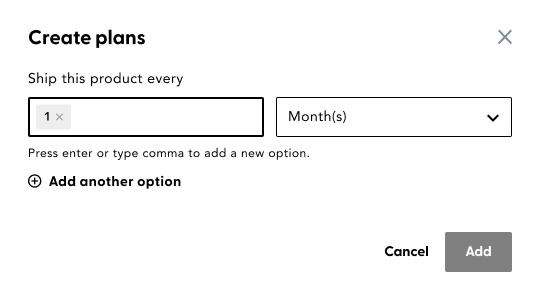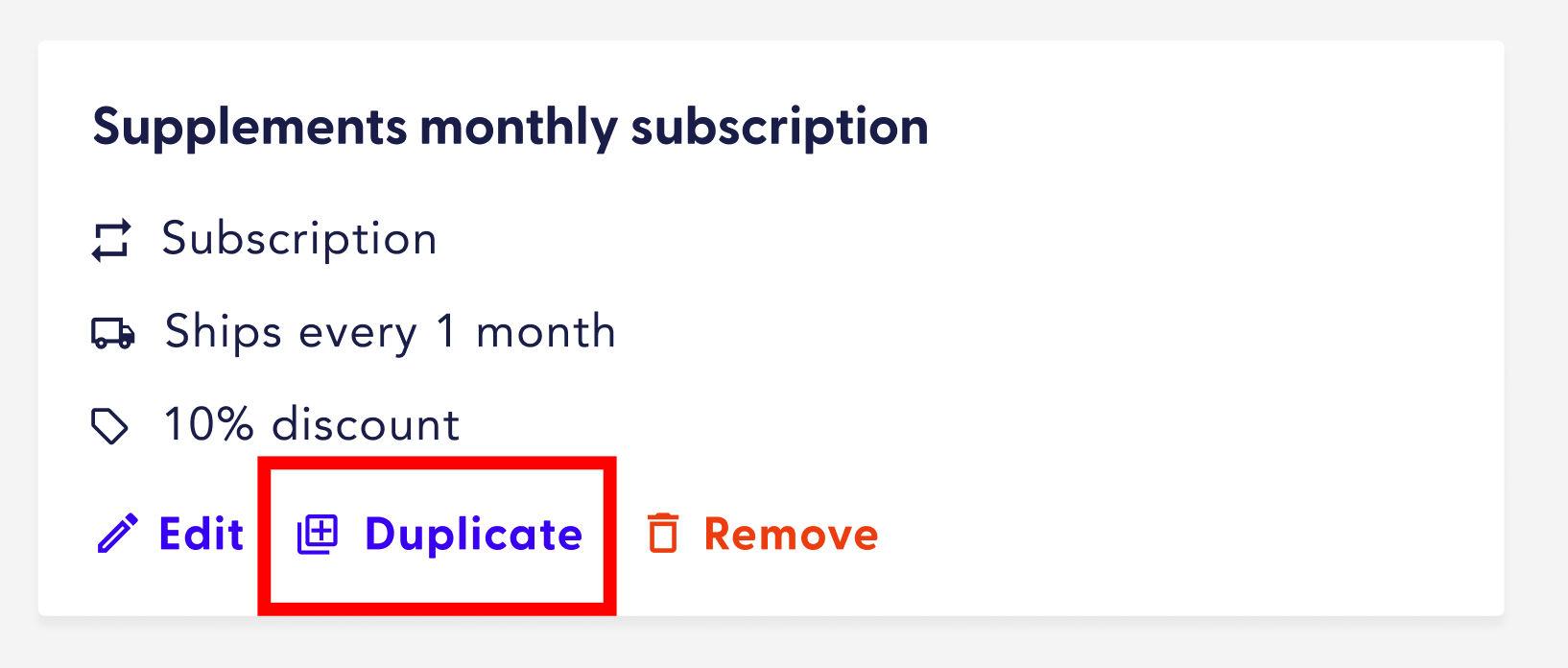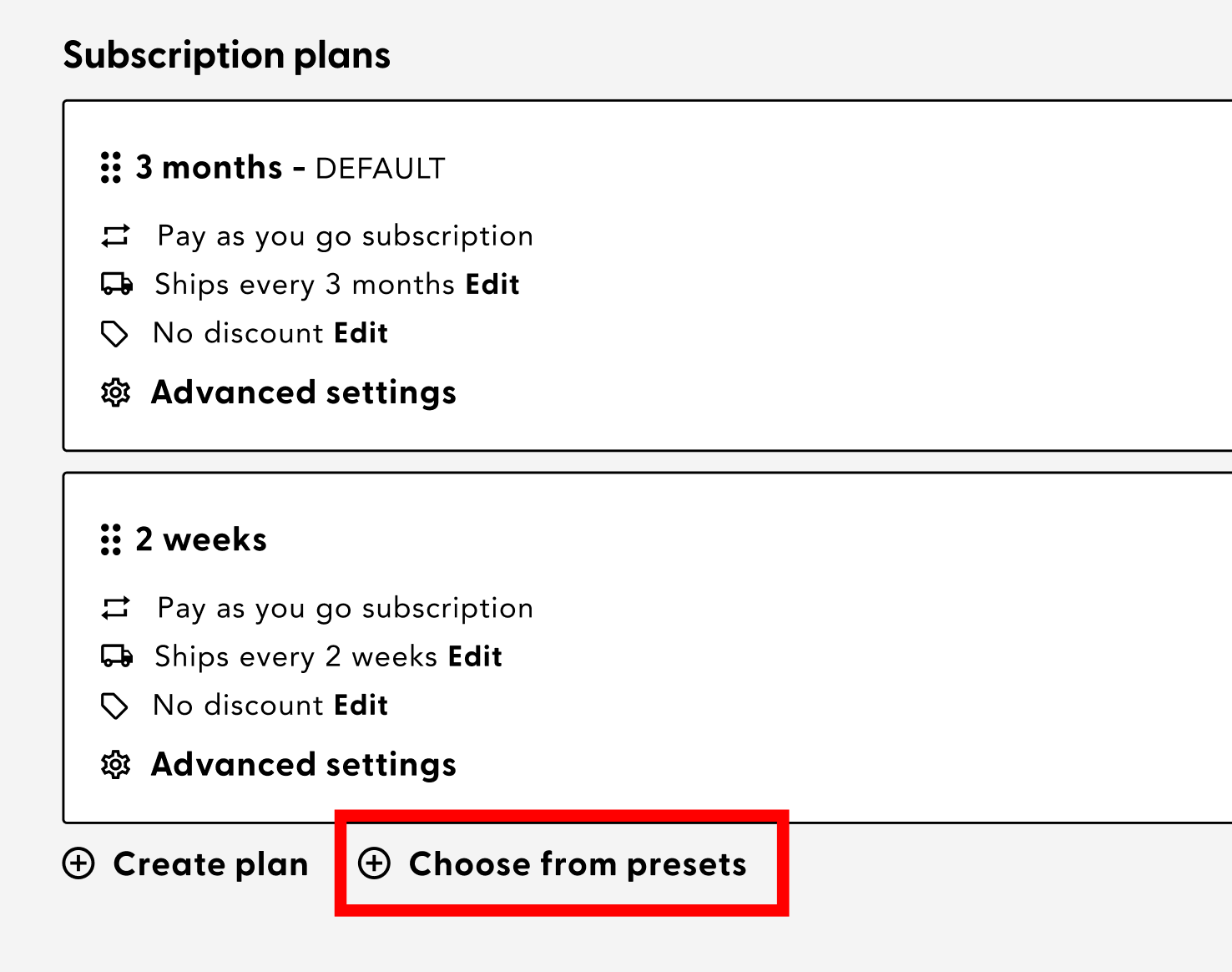Role: Lead Product Designer
TLDR
Researched, conceptualized, and designed the transition from Recharge’s legacy subscription setup to the new, more flexible Plans framework.
Conducted merchant calls throughout the entire redesign to understand pain points of the current setup, collect wishlist items to make merchants’ lives easier, and gather feedback on in-progress wireframes and designs.
Worked closely with a Product Manager, Product Owner, Engineers, and Product Marketing.
What was the problem?
In Recharge’s early days, subscriptions centered around the Recharge-specific concept of “rulesets.” A ruleset was essentially a group of products that shared the same subscription properties. The flow went:
Add products into Shopify -> Add products into Recharge -> Create ruleset -> Add subscription properties to the ruleset -> Add products to the ruleset 🤯
There were 3 main issues with this model.
Issue #1: It was redundant. Merchants already had their products in Shopify. Why should they have to now add them into Recharge? And then add them again into a ruleset? Frustrating, confusing, and time-consuming. 😡
Issue #2: Rulesets were a construct that merchants just didn’t understand. Essentially, we made up the concept and it didn’t stick. Everything’s made up and the points don’t matter (Whose Line Is It Anyway, anybody?) 😉
Issue #3: The existing system was limited in flexibility. Rulesets could only handle one frequency (selling a subscription every 1 month, 2 months, 3 months versus selling it every 2 weeks, 3 months, 30 days, or on a pre-paid basis).
So we knew there were issues…
But where the heck did we go from there? Well, we talked to our merchants. Lots of them. I pulled all of the information from our calls into a summary doc.
We checked that research against our own assumptions, which we had gathered in a project kickoff assumption mapping session.
We aligned around a few key points.
Merchants want control over product display on the customer portal and want to add one-time products.
Merchants desire more control over their subscription product setups.
Merchants want the ability to filter products while adding/viewing products.
Merchants care about quickly knowing some details about their products.
Merchants want to perform bulk actions on products.
Merchants want greater control over variants.
And then we started ideating
First we kicked off with a sketch session. These sessions are so important to me because they help me get inside the mind of my teammates. While I’m the designer, my teammates understand the merchants in unique and beneficial ways, and sketch sessions are impactful for facilitating collaboration.
We did a Crazy 8’s style sketch session, using the time to get ideas out really quickly and not overanalyze.
From the sketch session, I moved into rapid iterations, cranking out wireframe after wireframe, getting ideas on the table. Were all of the ideas great? Not at all. But they were jumping off points for discussion, and that was the goal.
A few rounds of low-fidelity later, we zeroed in on a couple directions that we wanted to show merchants for feedback.
We showed two iterations to merchants.
The goal of showing two very different options was to figure out if merchants preferred speed over flexibility.
Route #1: Quick-generate plans
Assumption: Merchants value speed in setup versus the ability to set very different settings for each plan.
Pros:
Lets merchants with straightforward setups generate a bunch of frequencies really quickly
Really fast if you know what you’re doing
Cons:
Assumes merchants want to keep other settings the same with each frequency
Not as intuitive if you aren’t used to this type of UI
Route #2: Create plans one at a time
Assumption: Merchants want to really think about each plan and its unique properties.
Pros:
Lets merchants really think through the specifics of each subscription frequency and set different discounts (a top priority for merchants)
Cons:
Cumbersome for merchants who don’t adjust discounts and other settings
After showing these to merchants…
Merchants gravitated towards setting up one plan at a time BUT they did miss the ability to quickly generate frequencies of the same interval (every 1, 2, or 3 months).
That feedback led us to 2 additions for convenience
Duplicating plans
After a merchant creates a plan, they can quickly duplicate it and adjust frequently-adjusted properties like frequency and discount.
Presets/Importing Plans
When merchants add new products to their catalog, they can easily copy over existing plans to the new products.
Having received confirmation that we were moving in the right direction (with areas to improve), we moved to high-fidelity
We continued to schedule calls with merchants and showed them 3 main areas of the designs.
The products list view
The product details page
The create plans flow
Merchant conversations gave us really good feedback.
Not having to add products into Recharge is AMAZING!
Adding properties to products felt more intuitive than the old rulesets concept, especially to newer merchants who didn’t have familiarity with the rulesets concept.
The ability to add different discounts to different frequencies was a game changer.
Being able to control the display order of plans on the storefront would be really useful (thanks to our drag-and-drop design idea).
Seeing more information about a product (such as SKU and variants) was very valuable .
This led us to finalize designs for the Early Adopters release to a select group of merchants.
We have 700 merchants using the new version right now in its early phases. Merchants’ overall feedback is that it’s very intuitive. Existing merchants just get it. We did receive a little bit of feedback that we’ve already addressed with designs:
One-time plans are a bit confusing, especially with how they interplay with Shopify
Variant level plans are suuuuper important and are therefore being elevated in priority
We’re approaching general release in a couple weeks and look forward to more merchants getting their hands on the experience. We have a Chameleon setup to guide new merchants with the plan setup process, and we’ll continue to look for friction from our existing merchants.
If you want to poke around the Figma file, you can do so here.



